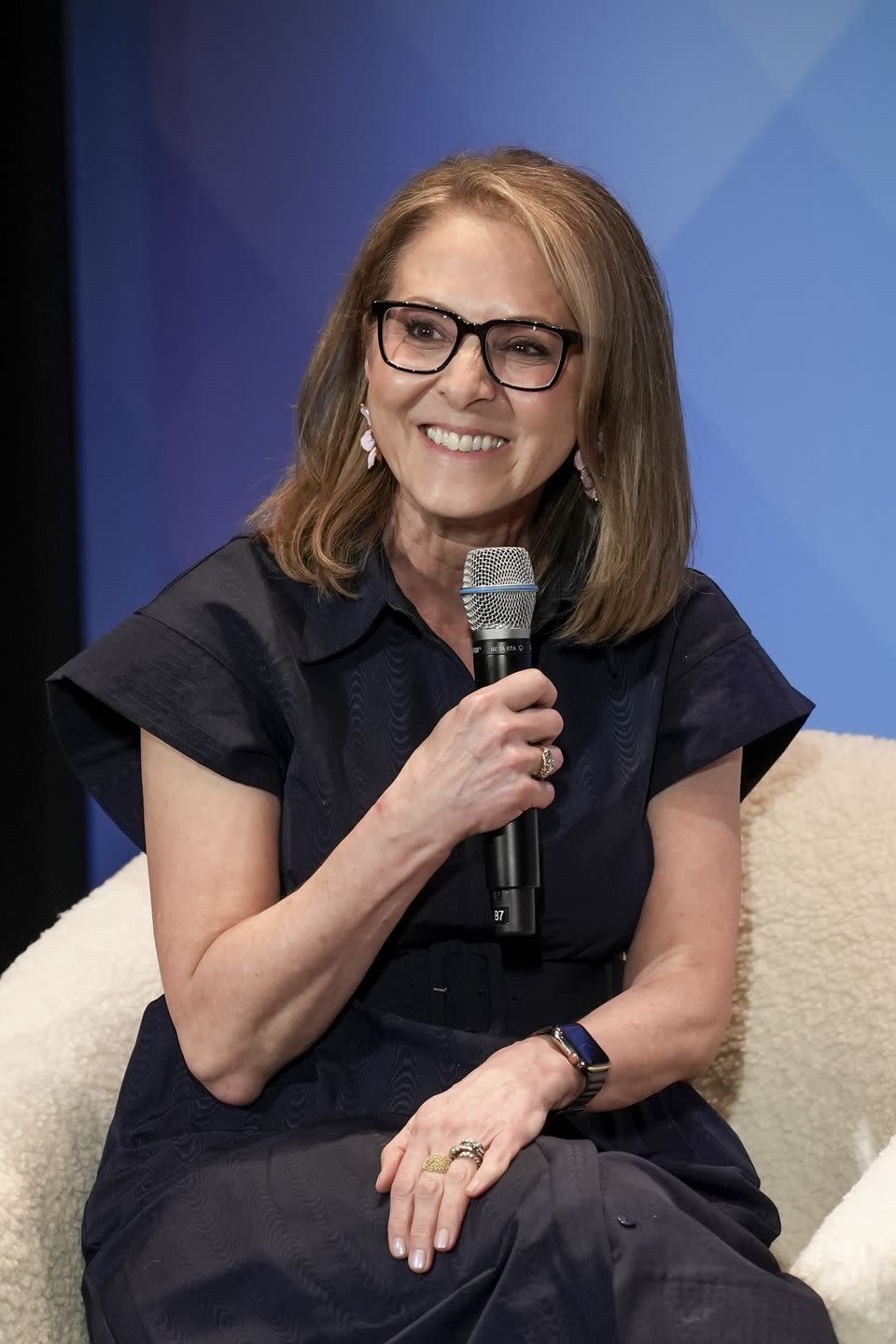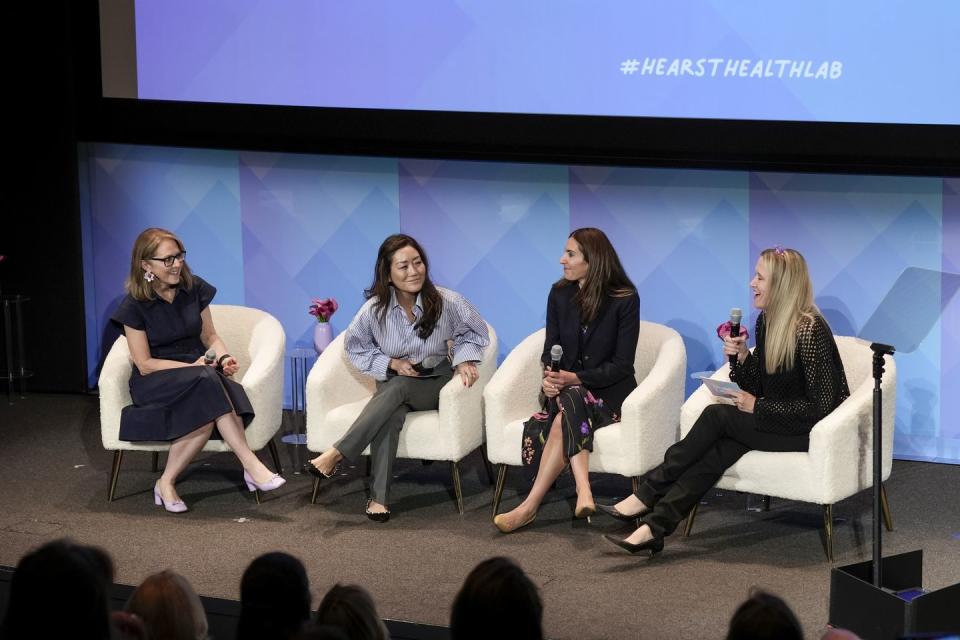After Losing More Than an Inch in Height, a Shocking New Diagnosis Changed My Life

It all started when I was in my 50s. Prior to my diagnosis, I was (and still am) a patient at Dana Farber Cancer Institute in the Adult Survivorship program, where long-term cancer survivors are followed in a specific way that takes into consideration our previous diagnosis, our comorbidities, and our treatments that we’ve had. For me, I’m a 35-year Hodgkin’s lymphoma survivor, and 35 years ago, I had a protocol of 4,800 rads of radiation (meaning, I hit a lifetime limit of radiation when I was just 25 years old). Now that I turned 60 last month, we are starting to see some long-term effects of that treatment...and you can’t un-radiate, as it turns out.
Over the years, I have been followed very closely at Dana Farber for a number of things. Throughout 2020 and 2021, we were doing virtual visits. So in 2022, when I went back for the first time in person, I was shocked to learn that I’d lost more than an inch of my height. Right off the bat, I accused my doctor of having a faulty measuring tape. The doctor then quickly ordered a DEXA bone scan, and those numbers were far more shocking than the inch of height that I had lost.
TELL US ABOUT YOUR DIAGNOSIS: Did you have symptoms that took a while to get properly diagnosed? We’d love to hear your story. Write to letters@prevention.com.
During a bone scan, you get a metric called a T-score, and that measures how dense your bones are. My spine T-score was -4.4, but I had no idea what that meant. I asked my doctor, “Do you see these numbers all the time?” and he said “Yes, but in patients who are over 90 years old”—that hit home pretty fast. I felt that my skeleton was aging faster than the outside of me and I felt like I was dissolving. When you think about aging, you think about a shrinking little old lady, and that’s how I felt.
Getting a diagnosis
I left that visit and immediately went online and started searching “What does -4.4 mean, how bad is it?” and I learned that it wasn’t great. My doctor put the weakness of my bones in perspective for me with one glaring realization: “You could break a bone rolling over in bed.” I couldn’t believe that I was walking around like this. I felt so fragile.
I knew that bone disease ran in my family, since my mother had osteopenia and so did my grandmother. In fact, when my mother was just a few years older than I am right now, she slipped on ice going into work, and she shattered her hip. It was a devastating injury, and it forced her into retirement. She retired before she wanted to, so she didn’t have the retirement she had envisioned her whole life.
Osteoporosis isn’t a terminal disease, but it terminates joy. It can terminate your job, and it can terminate the things that you love to do in life. I think that was what was hard to accept about my diagnosis…that I knew what it looked like and how bad it could be. I didn’t think I was immune to it, but I just didn’t feel ready to face it in my life. I didn’t know I was going to deal with it in my 50s.
When I got my osteoporosis diagnosis, it was a huge shock. I’ve had scarier things come up in my health before, but this one hit hard, and I didn’t want to deal with it. I tried to do my own interventions, like eating my bodyweight in kale every day and trying weight-bearing exercises. It was a psychological barrier for me—I felt like I didn’t want to be in that patient role, I didn’t want to start treatment because that felt reminiscent of other times in my life that I’ve been in treatment.
This is a silent disease. I am really keyed into my health, probably much more than most people because I’m a cancer survivor, but it still snuck up on me in a very stealth sort of way, and it felt like I was in such a deficit so suddenly. For most women, the first sign is bone fractures. I’m fortunate, and I don't know that I’ve had any fractures. That’s why it’s important for women to have early conversations with their doctors about bone health, because you are not going to get that tell-tale sign. It sneaks up on you, it’s insidious like that.
An action plan
In the end, what my cardiologist said to me was the turning point. He looked right at me and said, “Laura, if you don’t [treat] this, you’re going to take ten years off the end of your life.” I’m thankful he put it to me that way, because I started thinking about what I want the last ten years of my life to look like. I hope it’s down the road, I hope I can live into my 90s, but what do those last ten years look like? My mother got cheated out of them. So when I started focusing on that memory, it allowed me to break through and tell myself, “I’m going to do everything in my power to get stronger.”

For me, it’s about a strong life. After my diagnosis, I had to address some of the feelings I was having about aging. Now, I just turned 60, and I have to admit that I do worry about the grays coming in or the wrinkles, but I told myself: The strength of my bones is more important than the depths of my wrinkles. I need to at least treat my bones with the same care that I’m giving my skin or my hair, and nothing makes you look as old as osteoporosis.
Looking to the future
Since my diagnosis, I have made a lot of changes. In terms of my diet, I eat really well, I take calcium and vitamin d supplements. Prior to my bone scan, I was a pilates girl. Now, every other day, I’m lifting weights. My goal is to be able to lift my own carry-on suitcase into the overhead compartment. I don’t care about losing five pounds, I want to lift that dang suitcase and not have to ask for help!
I’m also eight months into a 12-month bone-building treatment. Because I had lost so much bone density, it wasn’t osteopenia or even beginning stages of osteoporosis, we were already in the severe category. I had long-intense conversations with my doctors, I did a lot of research, and I talked to other women before settling on this choice that was right for me. And I can feel that the treatment is working. I’m manifesting a skeleton for myself, and I can feel it!
I want to tell women everywhere to start working on your bone health earlier in life. I’ve found that if you build your bones and keep what you have, you can stay healthy and have those strong last ten years, and that’s what I’m focused on.
Laura Rinck shared her story at the Women’s Health Health Lab, on May 15th.

Women’s Health, with support from Cosmopolitan, Oprah Daily and Prevention, hosted the inaugural Health Lab at Hearst Tower in New York City. A first-of-its-kind summit devoted to the wide range of health issues impacting women, the Women’s Health Health Lab went deep on topics including bone health, healthy skin, heart health, menopause, maternal health, sports and fitness, and more. The program featured speakers including First Lady Jill Biden; CEO of the American Heart Association Nancy Brown; founder & president of Every Mother Counts Christy Turlington Burns; actress Kristin Chenoweth; author, advocate, and Vice Chair of Clinton Foundation Chelsea Clinton; actress Julianna Margulies; Peloton instructor Tunde Oyeneyin; NY Gotham FC soccer player Midge Purce, and more, in conversation with top editors from Hearst Magazines brands. Event panels also featured leading experts and doctors from event partner and sponsor Northwell Health's Katz Institute for Women's Health. Additional event sponsors include AbbVie, American Heart Association, Amgen, EltaMD, Rykä, and Sensei.
You Might Also Like


